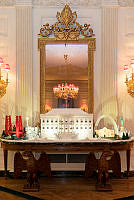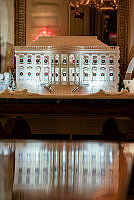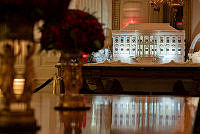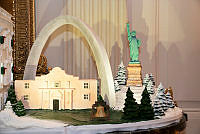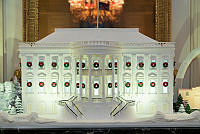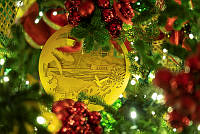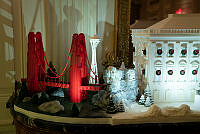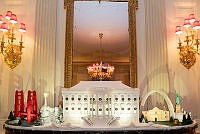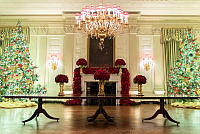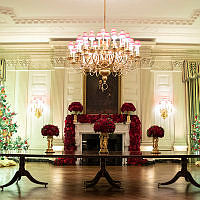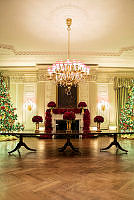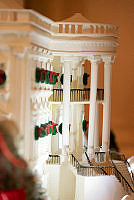Flight of the Madisons
Copyright © White House Historical Association. All rights reserved under international copyright conventions. No part of this article may be reproduced or utilized in any form or by any means, electronic or mechanical, including photocopying, recording, or by any information storage and retrieval system, without permission in writing from the publisher. Requests for reprint permissions should be addressed to books@whha.org
The flight routes of President James Madison and First Lady Dolley Madison are not exact and much of the evidence of where they stayed is circumstantial. Many of the stops along the two routes of the Madisons are no longer in existence or are privately owned. Intense development of the region in the twentieth century greatly impacted the historic integrity of the route.
James Madison's Flight
The afternoon of August 24, 1814, President James Madison was on the field of battle at Bladensburg, Maryland, when British troops overran American militia forces. Receiving word that General William Winder had called a retreat, he made his way back to the President's House. After assessing the situation, getting a fresh horse and packing a few items, he escaped from the city taking the Georgetown Ferry to Mason's Island and crossed over the Causeway into Virginia. He traveled the Georgetown Road to the Alexandria & Leesburg Road, where he headed west, stopping at Wren's Tavern in Falls Church. He later rode up to Minor's Hill, but did not stay there long because it was filled with refugees from Alexandria; it is thought that he spent the night the British burned the nation’s capital city at Salona (McLean). President Madison was back in Falls Church the following day.
Captain George Graham provided two guards and the president traveled on to Salona expecting to find Mrs. Madison, but discovered that she had already left. The president's flight inward down the Little Falls Road (Chain Bridge Road) was stopped by a ferocious storm. He found shelter at a location simply known as the crossroads; this is probably the area of today’s Tysons Corner. After the storm, he continued on to Wiley's Tavern on the Alexandria & Leesburg Road, and met the first lady who was already there. After a few hours rest, Madison, intent on joining Winder's troops gathering at Montgomery Court House (Rockville) in Maryland, set out for Conn's Ferry, located in what now is Riverbend Park. A hurricane-force storm made the Potomac impassable, but after it passed he was ferried over to Maryland the afternoon of August 26. After a brief stop at Montgomery Courthouse, where he learned the American troops had already moved on toward Baltimore, he continued further, ending the day at Brookeville, Maryland.
Dolley Madison's Flight
After seeing to the safety of the full-length portrait of George Washington, Dolley Madison left the President's House, making her way to Bellevue (Dumbarton House) to await the arrival of her husband. She received word that his plans had changed and that he would not be able to join her, but would simply meet her on the other side of the Potomac. After a failed attempt to link up with him at the Georgetown Ferry, the first lady traveled north to the Chain Bridge near the Little Falls and crossed into Virginia. She traveled up the very steep Falls Road and turned off for Rokeby where she spent the fiery night of August 24. The following morning Dolley stopped briefly at Salona before making her way further inland to Wiley's Tavern on the Alexandria & Leesburg Road, where she spent the night. On August 26, Dolley headed back toward the still smoldering capital city, but remained in Virginia at Minor's Hill, the highest point in the area. She spent two nights there, before leaving the morning of the 28th, to return to Washington City. The President's House was totally destroyed by the fires, so she went to the home of her sister Anna and her husband, former Congressman Richard Cutts, on F Street.













